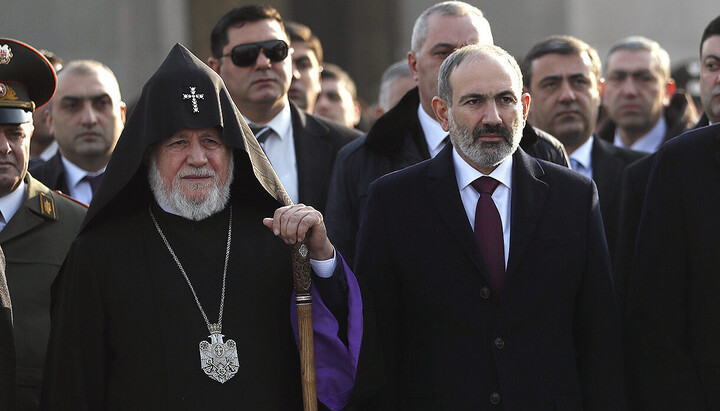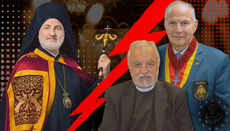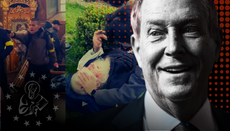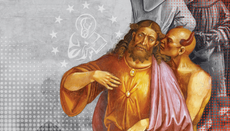Why Is Armenia's Government Attacking the Church?

The Armenian Apostolic Church has emerged as a major critic of Armenia's prime minister, Nikol Pashinyan. How far will he go to silence them?
YEREVAN — In the summer of 2025, Armenia finds itself embroiled in a struggle that cuts deeper than politics, touching the very soul of the nation. Prime Minister Nikol Pashinyan, champion of the 2018 Velvet Revolution, has launched an unprecedented campaign against the Armenian Apostolic Church, an institution that has served as the bedrock of Armenian identity for over 1,700 years.
This conflict, marked by vitriolic rhetoric, arrests, and accusations of moral and political betrayal, is not merely a power struggle but a battle over the heart of Armenia itself. To understand this feud, we must trace its historical roots, unpack its causes, and consider its implications for a nation already battered by war and division.
The Armenian Apostolic Church was established in 301 AD when King Tiridates III declared Christianity the state religion. It is not just a religious institution: for most Armenians, it is the living embodiment of their national resilience. Through centuries of invasions—Persian, Byzantine, Arab, Mongol, Ottoman, and Soviet—the Church has preserved Armenian language, culture, and faith. The Mother See of Holy Etchmiadzin, about twenty kilometers from the capital of Yerevan, is a sacred site–the “Armenian Vatican,” as it were. Catholicos Karekin II, the Church’s primate, commands a moral authority that transcends politics, a fact that has long rankled secular leaders seeking unchallenged control.
Pashinyan’s rise to power in 2018, on the crest of a populist wave that promised an end to corruption, came with visions of a new Armenia: democratic, modern, and free from the shadows of post-Soviet cronyism. Yet his tenure has been marred–and in many ways defined–by the catastrophic 2020 Nagorno-Karabakh war, in which Armenia’s defeat to Azerbaijan led to the loss of ancestral lands and the displacement of tens of thousands. The Church, under Karekin II, became a vocal critic of the Pashinyan administration, blaming the PM for Armenia’s defeat and demanding his resignation.
This marked the beginning of a simmering feud, as the Church, a bastion of national identity, refused to bend to Pashinyan’s vision of a “Real Armenia” focused on economic modernization and peace with Azerbaijan.
The current escalation, erupting in May 2025, is a descent into the profane. Pashinyan’s accusations that Karekin II violated his celibacy vow by fathering a child—echoed by government-affiliated media circulating photos of an alleged daughter—are not just personal attacks. They are a calculated assault on the Church’s moral legitimacy. Armenia’s first lady, Anna Hakobyan, has likened clergy to pedophiles. Pashinyan himself has offered to prove his Christian credentials in a manner too crude to repeat.
The Church, in response, has accused Pashinyan of undermining Armenia’s “spiritual unity,” with senior clerics like Bishop Hovnan Hakobyan calling him “deranged.”
Key to understanding this conflict is Pashinyan’s declining popularity. As of May, his approval rating has dwindled to a mere 11.5%. No doubt the Church also provides a scapegoat for his failures. The 2020 war and the 2023 loss of Nagorno-Karabakh have left Armenians disillusioned, and the Church’s criticism amplifies this discontent.
Also, Pashinyan’s “Real Armenia” agenda, which prioritizes economic integration and peace with Azerbaijan, clashes with the Church’s emphasis on historical grievances and national pride. The Church’s call for the return of displaced Armenians from Nagorno-Karabakh directly contradicts Pashinyan’s peace negotiations, which involve territorial concessions.
Predictably, Pashinyan has also accused the Church and its powerful supporters of acting as Russian proxies. Billionaire Samvel Karapetyan was arrested in June 2025, followed by the detention of Archbishop Bagrat Galstanyan. Both were charged with plotting “the seizure of power.”
It’s worth noting that Karekin’s brother Yezras serves as head of the Armenian Apostolic Church’s Russian Diocese and Legate to the Patriarch of Moscow.
Pashinyan’s pivot toward the West, including Armenia’s EU membership aspirations, further alienates the Church, which sees itself as a guardian of tradition against foreign influence.
Earlier this month, Pashinyan’s rhetoric became even more extreme. He has threatened to “liberate” Etchmiadzin. On another occasion, he vowed to lead a “cleansing” of the Armenian clergy. He has also referred darkly to a “Great Spiritual Meeting” of security forces and sectarian groups, which would seek to oust Karekin II as Catholicos.
Armenia has a national election scheduled for June 7, 2026. As the date draws nearer, and as Pashinyan’s approval ratings continue to fall, we should expect an escalation in anticlericalism from the PM’s office. This would almost certainly lead to a backlash against Pashinyan. The question is how much damage this desperate man can inflict in the next ten months.









